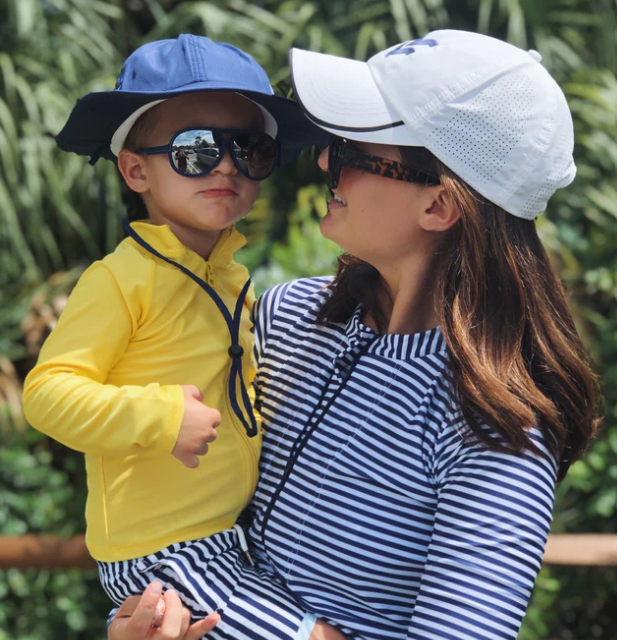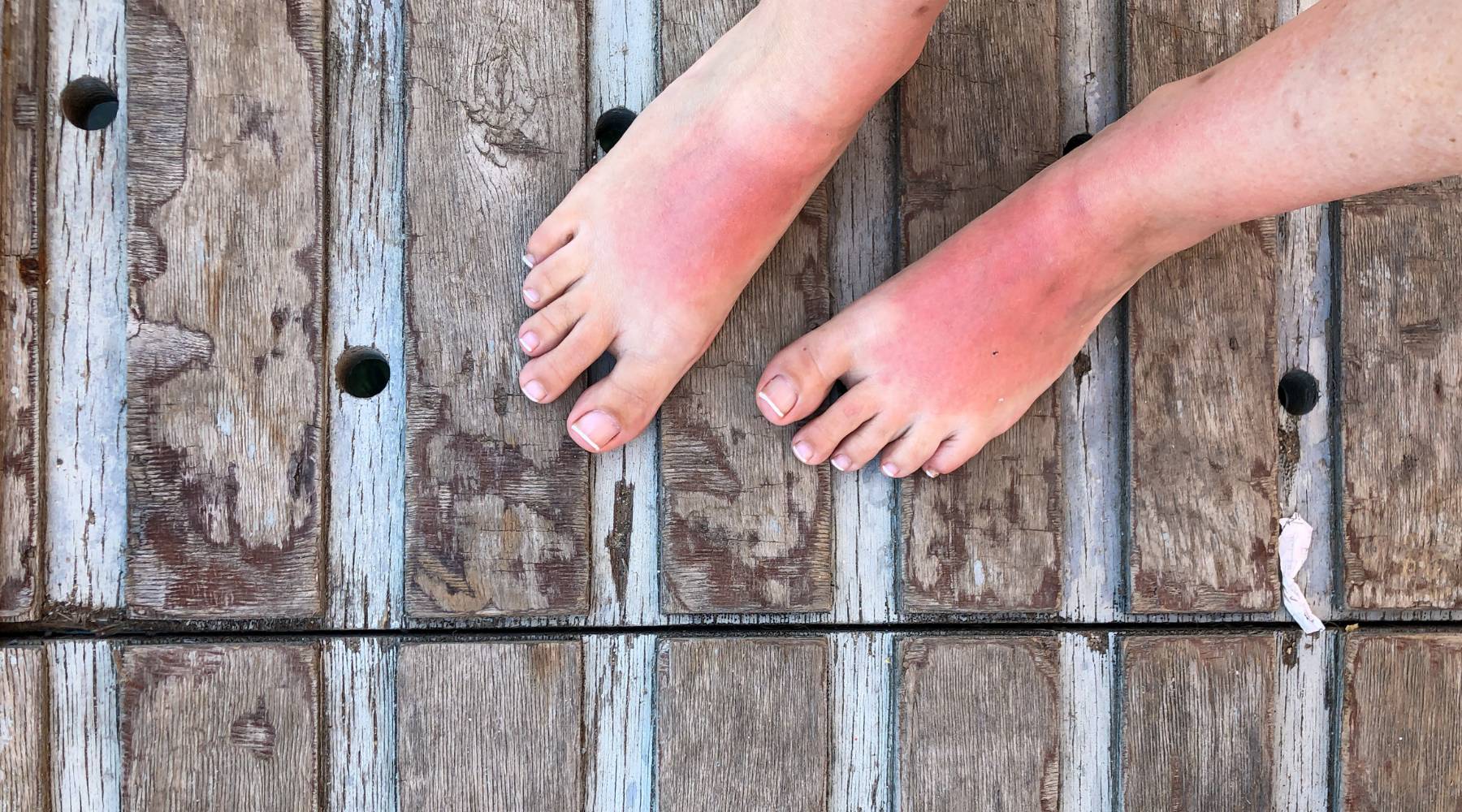
What is the best UV index for tanning?
Ultraviolet radiation is a double-edged sword: it can give you a tan, but it can also burn your skin and even give you cancer. When tanning, pay attention to the UV index, no matter the weather.
We'll share sun protection tips and explore what UV index levels provide the best opportunity for tanning without compromising your skin's health.
What is ultraviolet light?
Ultraviolet (UV) light is an invisible electromagnetic radiation that comes from the sun. It is categorized into UVA, UVB, and UVC rays based on wavelength.
The main types of UV radiation from the sun are:
- UVA: longer wavelengths that penetrate deep into the skin layers. UVA causes skin aging and wrinkling.
- UVB: shorter wavelengths that burn the outer skin layers. UVB causes sunburns and plays a role in some skin cancers.
- UVC: the shortest wavelengths that get absorbed by the ozone layer. Very little reaches the Earth's surface.
UV radiation cannot be seen or felt. Other types of radiation from the sun include visible light and infrared radiation, which we perceive as brightness and warmth.
How is ultra-violet light measured?
The UV index is an easy way to gauge the potential for skin damage from the sun's rays during outdoor time. This 1-14+ rating (higher numbers indicate stronger UV radiation) is based on factors like cloud cover, ozone levels, location, and time of year.
While no exposure is completely without risk, the index helps guide limits by intensity:
- UV Index 1-2: minimal sun protection needed
- UV Index 3-5: moderate protection is advised
- UV Index 6-7: high risk of harm, cover up/use caution
- UV Index 8-14: considered dangerous, avoid extended exposure
How would the sun affect different skin types?
Skin and eye color are dictated by melanin content encoded in our genes. Melanin is a pigment produced by cells called melanocytes that protects the deeper layers of skin from UV damage. People with darker complexions have more active melanin pigment cells.
The Fitzpatrick Skin Type scale categorizes skin into six phototypes based on melanin levels (skin color).
- Type I (pale white skin): always burns easily; never tans
- Type II (white to light beige): usually burns, tans minimally
- Type III (light brown): may burn, tans uniformly
- Type IV (moderate brown): minimally burns, tans easily
- Type V (dark brown): very rarely burns, tans profusely
- Type VI (darker skin that's brown to black): never burns, deeply pigments
Excessive UV exposure causes skin damage and cancer. Those with Type I and II skin need to be highly cautious in the sun. Avoid prolonged exposure and apply sunscreen vigilantly. People on the other end of the scale with Type V-VI skin can spend reasonable unprotected time in the sun without burning due to innate melanin protection. However, they are still at risk of skin cancer and aging from exposure to UV radiation over time.
How to find the UV index in your area?
Use our handy UV index checker to find the UV index in your area before heading out to tan. Enter your city, and the checker will tell you whether ultraviolet radiation is low, medium, or high.
If you’re heading to the beach, pool, or playing sports outside during the summer months, and the UV index is high (6-14), you should limit your exposure or wear protective clothing and sun hat.
Which UV index is best for tanning?
There is no totally safe UV index for tanning. Tanning is a sign of skin damage, and even a low level of exposure to UV radiation can increase your risk of developing skin cancer.
“Sun exposure can cause acute and long-term effects, including carcinogenesis and photoaging, but photoprotection can minimize these effects.” (Taylor, et. al.)
If you are going to tan, do so with a low UV index. Higher UV levels may get you tan faster, but they expose you to unsafe amounts of ultraviolet radiation. You might be in a hurry to get your tan, but it’s not worth the cancer risk.
What is the lowest UV index you can tan in?
Doctors say the ideal way to get a tan is to gradually build melanin and allow the darkest tans at UV index levels under 3. Brief, mild sun exposure sessions even at level 2 can stimulate melanin over time. However, aim for just 10-15 minutes daily to start so your skin can acclimate without getting burnt.
UV index 3 tan time
At an index of 3, fair-skinned people can tolerate about 15-30 minutes of midday sun exposure with minimal risk depending on exact skin tone. Time limits here to avoid burns are very strict though—any redness is a sign to get out of the sun immediately.
UV index 4 tan time
Those with light complexions should cap exposure to 5–15 minutes when the index is 4. More olive tones may be able to handle an hour or so. Apply sunscreen routinely as sunburns can still happen at lower levels of UV radiation.
UV index 5 tan time
At a UV index of 5, you should limit exposure to below 5 minutes, or use sun protection (sunscreen or sun-blocking clothing).
UV index 6 tan time
UV index 6 can cause damage fairly quickly. Limit exposure to a couple minutes or less, and use sun protection.
UV index 7 tan time
At UV index 7, it’s best to stay out of the sun. If you’re going to be in the sun, make sure to protect your skin. Use high-SPF sunscreen and sun-protective clothing.
UV index 8 tan time
It’s best to avoid direct sunlight for extended periods of time during UV index 8 and higher. Use appropriate sun protection, such as a wide-brimmed hat and UV-blocking clothes.
When is the UV index too high to tan?
It is not a good idea to tan when the UV index is above 6. Tanning when the UV index is high increases the likelihood of sunburn, skin cancer, and long-term damage. The fairer your skin is, the more careful you need to be.
What UV index is a tanning bed?
Artificial tanning from beds and booths is extremely dangerous, with UV output equaling a whopping index of 12-13. This can be up to 15 times stronger than sun exposure at sea level. Tanning lamps emit high levels of UVA rays which pose a considerable risk of melanoma and photo-aging over time. The FDA urges consumers to avoid tanning beds altogether.
What are the dangers of sun exposure?
“Sunburn is common among younger adults, those with sensitive skin, whites, those with a family history of melanoma, highly physically active, and indoor tanners.” (Holman, et. al.)
Your skin will be damaged by exposure to too much UV light. This holds true regardless of your chosen medium for tanning, whether the sun or a tanning bed.
- Sunburn: ranges from mild pinkness to severe blistering
- Premature aging: wrinkles, age spots, loose skin
- Skin cancer: including melanoma and other malignancies
- Eye damage: short and long-term ocular harm
- Severe sun poisoning: requires hospitalization after just a couple of hours unprotected in high indexes.
Sun exposure and cancer
Overexposure to ultraviolet radiation can lead to premature skin aging, sunburn, eye damage, and skin cancer. UV radiation interacts with the DNA in skin cells, causing genetic mutations that allow cancers to grow. There are three main types of skin cancer:
- Basal cell carcinoma: the most common form that rarely spreads. It appears as a fleshy bump or patch on sun-exposed areas like the head and neck. Basal cell carcinoma is linked to cumulative UV exposure over long periods.
- Squamous cell carcinoma: begins in the flat squamous cells in the outer skin layers. It looks like a firm red nodule and can spread to other areas of the body in advanced stages. Squamous cell carcinoma results from intense, intermittent UV exposure.
- Melanoma: the most dangerous skin cancer that originates from pigment-producing melanocytes. Melanoma can spread quickly through lymph and blood vessels to other organs in advanced stages. Blistering childhood sunburns are a major risk factor for melanoma later in life.
To prevent skin cancer, doctors recommend avoiding excessive sun exposure, especially during mid-day hours. Seeking shade, covering up exposed skin, and using broad-spectrum sunscreen are key sun protective measures. Regularly checking your skin for new or changing moles is also important for early diagnosis.
How to protect yourself from sun damage?
“Modern sun protection should include shielding against visible light, near infrared A, and ultraviolet radiation, with a focus on avoiding peak sun exposure and using textiles and antioxidants for enhanced protection.” (
Protect yourself from sun damage with the following measures:
- Shade
- Protective clothing
- Sunscreen
- Hydration
Seek out shady spots
When UV levels reach their peak midday intensity, retreat to shade. If you’re on the beach, you can use a sun umbrella. Plan more sun-exposed activities for early morning or late afternoon. Use sun-protective clothing and a wide-brimmed hat.
Cover up
In addition to timing adjustments, employ protective apparel as an ally against excessive ultraviolet exposure.
The Skin Cancer Foundation actually recommends covering with tightly woven fabrics alongside SPF safeguards when stepping into the midday sun. While time of day is important, seek out sun-wise clothing like:
- Sun-protective swimwear: our swimwear blocks over 98% of UV radiation
- Lightweight hoodies: shield shoulders and décolletage
- Wide-brim hats: shields face, neck
- UV-blocking accessories: from stylish wraps to sun gloves
Apply and reapply sunscreen
Slather on broad spectrum SPF 30+ water/sweat-resistant formulas, ideally with antioxidants to combat free radicals.
Reapply sunscreen at a minimum of every two hours, or immediately following water activity. Spray options help touch up hard-to-reach spots easily without leaving residue.
Stay hydrated
Don’t forget internal sun protection. Combat solar dehydration by sipping cool water with added electrolytes. Snack on juicy melon, berries, and citrus full of skin-helpful vitamin C too. Light seafood, leafy greens, and tomato dishes also aid skin resilience.
Protect yourself with sun-blocking beachwear
Protect your family with SwimZip sun-blocking beachwear. Our selection of UPF 50 swimwear protects from ultraviolet radiation.
Browse our range of beachwear by style, type, and level of coverage.
Ultraviolet Index FAQ
Can you get a tan with a UV index of 4?
Yes, a UV index of 3-5 is moderate and ideal for tanning. While the UV index is 4, the sun's rays are strong enough to stimulate melanin production without causing severe damage. An index of 4 can tan fair skin, but don’t stay exposed for more than 20 minutes or so at a time.
What is the tan time in a UV index of 7?
In a UV index of 7, those with fair skin run the risk of skin damage with just 10 minutes of exposure. If you have darker skin, you can handle a bit longer, but it’s still risky.
Is UV index 11 high?
11 is a dangerously high UV index signifying intense ultraviolet radiation. Avoid exposure.
What UV index is a sunbed?
Indoor tanning beds typically have a UV rating of around 12 or higher. This makes them riskier than the direct midday summer sun, which is normally 10 or lower—even at the equator.
How long should I tan in UV index 6?
In a UV Index of 6, very fair skin can burn in a few minutes, while those with darker skin will take a bit longer to burn.
Does SPF 30 remove tan?
No, using sunscreen does not remove an existing tan. SPF 30 sunscreen blocks 97% of UVB rays that cause sunburn. It allows some UV rays to reach your skin, allowing you to maintain a tan. Reapplying often is key.
Is SPF 100 good for tanning?
SPF 100 blocks 99% of UVB rays. This high protection leaves only a tiny fraction of UV light that can react with your skin, so tanning would be extremely slow. Stick to an SPF of 30-50 when you tan. This decreases skin cancer risks.
Can you tan with SPF 50?
Yes, tanning is possible with SPF 50 sunscreen. SPF 50 filters out 98% of UVB rays, letting in more UV light than SPF 100. Apply water-resistant SPF 50 liberally and reapply every 2 hours. This allows enough UV exposure for tanning while preventing burning.
Resources
- Taylor, C., Stern, R., Leyden, J., & Gilchrest, B. (1990). Photoaging/photodamage and photoprotection.. Journal of the American Academy of Dermatology, 22 1, 1-15 . https://doi.org/10.1016/0190-9622(90)70001-X.
- Holman, D., Berkowitz, Z., Guy, G., Hartman, A., & Perna, F. (2014). The association between demographic and behavioral characteristics and sunburn among U.S. adults - National Health Interview Survey, 2010.. Preventive medicine, 63, 6-12 . https://doi.org/10.1016/j.ypmed.2014.02.018.




Leave a comment
This site is protected by hCaptcha and the hCaptcha Privacy Policy and Terms of Service apply.